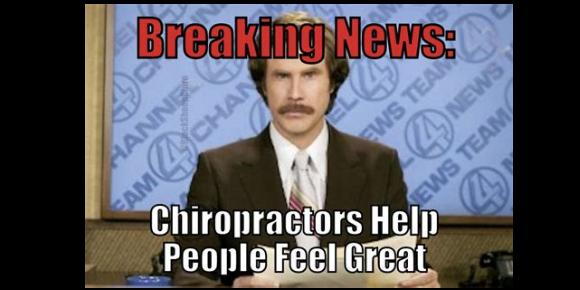
- posted: Jul. 24, 2019
Visiting a chiropractor is generally the same as visiting other healthcare providers, but there are some obvious differences. 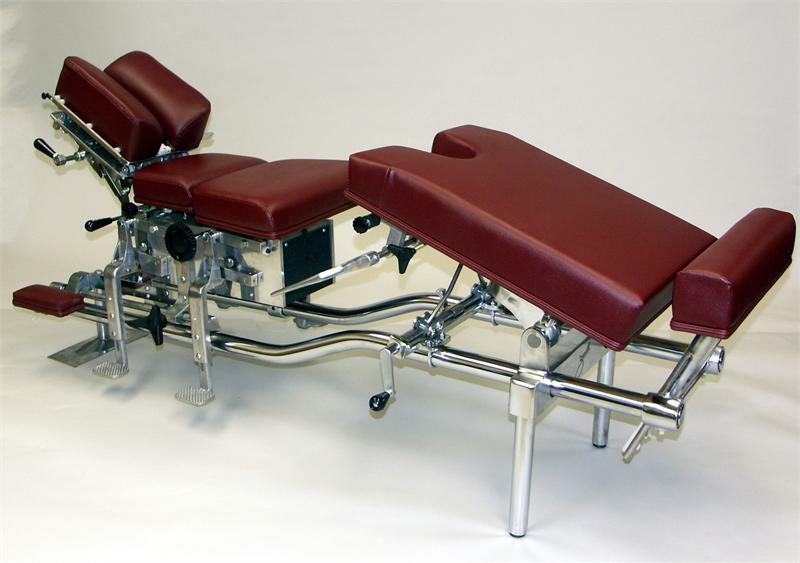 Official chiropractic table
Official chiropractic table
(you'll understand this caption after the first paragraph...)
You will likely find the office setting and intake procedures fairly familiar, but many notice the distinctive, slightly Franenstein-esque appearance of the chiropractic treatment table. These tables have a bunch of levers, bells, and whistles (metaphorically speaking … I swear the doc won’t be blasting any whistles while he’s adjusting you!) to allow specific positioning and movement during spinal adjustments and assist him during the chiropractic treatment.
A typical visit to a chiropractor includes an initial assessment, physical exam, and follow-up plan, which will be when your adjustments begin.
At Gulph Mills Chiropractic Center, the Initial Assessment is complimentary, including x-rays if necessary.
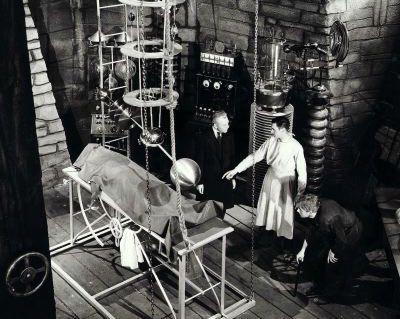
Not a chiropractic table, but you can see the resemblance, no?
What happens during the initial appointment?
An initial chiropractic consultation is very similar to that of a standard medical intake. You will likely complete a health questionnaire and answer questions about your health history. Typically the chiropractor asks you to indicate where you are experiencing discomfort by marking the areas on a drawing of the human body. Fortunately, the drawing of the human body was done by an artist & not Dr. Roger.
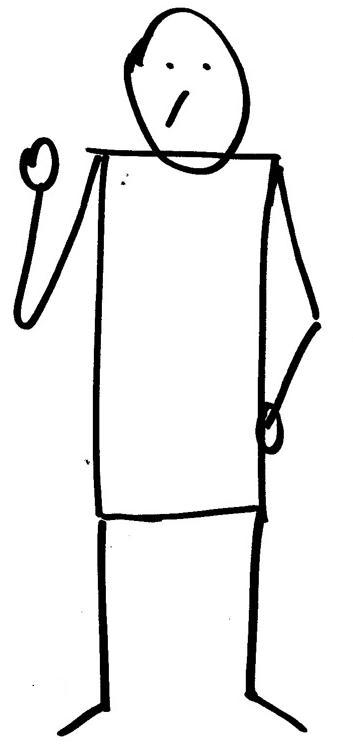
What happens during the physical exam?
The chiropractor will start with a routine physical exam, then follow it with an exam that focuses on the spine, paying particular attention to the areas of complaint. The chiropractor will most likely examine your whole spine. For example, if you had a low back complaint, the chiropractor would also likely perform a neck exam because the adaptations resulting from injury or subluxation in one area can result in secondary irritations somewhere else in the spine.
The physical exam typically includes a variety of assessments, such as range of motion tests, palpation, reflex testing, muscle strength comparisons, and neurological and orthopedic tests focused on the main complaint. Dr. Roger may also ask you to stand with your left foot one scale and your right foot on another. This may seem an odd request, but the doc is checking to see how you distribute your weight. You might be surprised to see that it’s not distributed evenly.
What goes into a treatment plan?
Following the assessments, Dr. Roger will develop a treatment plan that takes into account:
- The extent of your injury or irritation
- Your general health
- The condition of your spine as affected by age and previous injury
- What your goals are - this is most important item
Your goals of treatment should result from the discussion you have with your chiropractor. Many people seek simple relief of pain or discomfort, while others want to begin a regimen of ongoing care meant to improve their general health.
It is important to remember, though, that pain is your body’s final cry for help before it begins to shut down from the root of the problem; most chiropractic treatment will alleviate pain within just a few visits, but the root of the problem still exists. Only time, patience, and repetition can truly "cure" your pain. Dr. Roger will recommend a treatment plan based on aligning your spine so that true healing can take place, not just temporary pain relief.
In initial consultations, your chiropractor will tell you the status of your condition and recommend an approach to care. Ask questions. As in any professional-patient relationship, trust and mutual understanding are vitally important.

What is a typical treatment?
"Adjustments" are usually the central part of chiropractic treatment. The chiropractic adjustment is a controlled therapeutic manipulation, which chiropractors study at a chiropractic school to learn, just as your medical doctor learns his or her trade at a medical school.
Most chiropractors will only make these adjustments to the spine, but Dr. Roger specializes in extremity adjustments, and will likely adjust other joints, such as the ankle, knee, wrist, elbow, or shoulder in order to restore structural alignment or to improve joint function. Again, proper structure is necessary for proper function, and proper extremity function is an important part of healthy daily living.
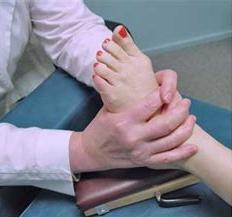
One of many extremity adjustments Dr. Roger can perform for better healing
When being treated for a complaint such as back or neck pain, you will most likely receive a series of adjustments, separated by either a day or a few days, to incrementally reduce the irritation and improve normal function. This might continue for several weeks, usually diminishing in frequency.
Dr. Roger may direct you to use non-manual therapies in addition to the manipulations you receive from him, such as application of heat or ice, orthotic supports for your shoes, rehabilitative exercise, counseling about diet, weight loss, and other lifestyle factors, and nutritional supplements*.
Dr. Roger takes great delight in knowing that he is able to help his patients become well & resume normal, active lives with his treatment.
Call Gulph Mills Chiropractic Center to schedule your complimentary Initial Assessment: 484-751-5037.
Check our website to see what our patients have to say about Dr. Roger & the care he gives his patients: www.GulphMillsChiro.com.
*Please note: Gulph Mills Chiropractic Center does not sell supplements & Dr. Roger would never expect you take a supplement if you are uncomfortable doing so. GMCC does not receive any monetary gifts or rewards from any stores for suggesting supplements to you as our patient. He may recommend a store to purchase supplements from, strictly because he has done research and knows that their products are high quality.
Location
Find us on the map
Courtside Square Apartment Building
570 West Dekalb Pike, Ground Floor, Suite 113
King of Prussia, PA 19406, United States
Office Hours
Our Regular Hours
7:30 am - 12:30 pm
3:00 pm - 6:00 pm
10:00 am - 12:30 pm
3:00 pm - 6:00 pm
7:30 am - 12:30 pm
7:30 am - 12:30 pm
3:00 pm - 6:00 pm
Closed
Select Saturdays from 9am to 11am
Apr 27, May 11, Jun 1
Closed
